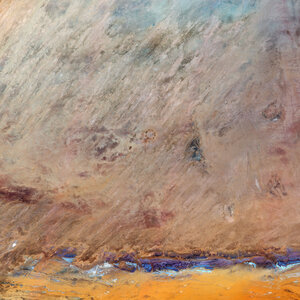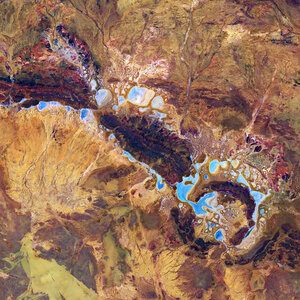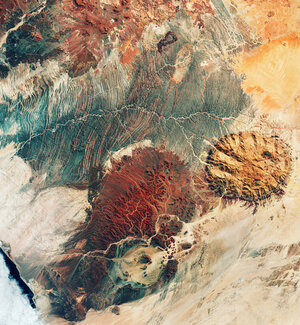Accept all cookies Accept only essential cookies See our Cookie Notice

About ESA
The European Space Agency (ESA) is Europe’s gateway to space. Its mission is to shape the development of Europe’s space capability and ensure that investment in space continues to deliver benefits to the citizens of Europe and the world.
Highlights
ESA - United space in Europe
This is ESA ESA facts Member States & Cooperating States Funding Director General Top management For Member State Delegations European vision European Space Policy ESA & EU Space Councils Responsibility & Sustainability Annual Report Calendar of meetings Corporate newsEstablishments & sites
ESA Headquarters ESA ESTEC ESA ESOC ESA ESRIN ESA EAC ESA ESAC Europe's Spaceport ESA ESEC ESA ECSAT Brussels Office Washington OfficeWorking with ESA
Business with ESA ESA Commercialisation Gateway Law at ESA Careers Cyber resilience at ESA IT at ESA Newsroom Partnerships Merchandising Licence Education Open Space Innovation Platform Integrity and Reporting Administrative Tribunal Health and SafetyMore about ESA
History ESA Historical Archives Exhibitions Publications Art & Culture ESA Merchandise Kids Diversity ESA Brand Centre ESA ChampionsLatest
Space in Member States
Find out more about space activities in our 23 Member States, and understand how ESA works together with their national agencies, institutions and organisations.
Science & Exploration
Exploring our Solar System and unlocking the secrets of the Universe
Go to topicAstronauts
Missions
Juice Euclid Webb Solar Orbiter BepiColombo Gaia ExoMars Cheops Exoplanet missions More missionsActivities
International Space Station Orion service module Gateway Concordia Caves & Pangaea BenefitsLatest
Space Safety
Protecting life and infrastructure on Earth and in orbit
Go to topicAsteroids
Asteroids and Planetary Defence Asteroid danger explained Flyeye telescope: asteroid detection Hera mission: asteroid deflection Near-Earth Object Coordination CentreSpace junk
About space debris Space debris by the numbers Space Environment Report In space refuelling, refurbishing and removingSafety from space
Clean Space ecodesign Zero Debris Technologies Space for Earth Supporting Sustainable DevelopmentLatest
Applications
Using space to benefit citizens and meet future challenges on Earth
Go to topicObserving the Earth
Observing the Earth Future EO Copernicus Meteorology Space for our climate Satellite missionsCommercialisation
ESA Commercialisation Gateway Open Space Innovation Platform Business Incubation ESA Space SolutionsLatest
Enabling & Support
Making space accessible and developing the technologies for the future
Go to topicBuilding missions
Space Engineering and Technology Test centre Laboratories Concurrent Design Facility Preparing for the future Shaping the Future Discovery and Preparation Advanced Concepts TeamSpace transportation
Space Transportation Ariane Vega Space Rider Future space transportation Boost! Europe's Spaceport Launches from Europe's Spaceport from 2012Latest
Roter Kamm impact crater
Thank you for liking
You have already liked this page, you can only like it once!
On Asteroid Day, the Copernicus Sentinel-2 mission takes us over the Roter Kamm impact crater in Namibia. The circular shape of the crater rim can be seen in the left of the image, just below the centre.
Zoom in to view this image at its full 10 m resolution.
The Roter Kamm impact crater is located in the Tsau ǁKhaeb National Park, also known as the Sperrgebiet, a diamond mining area in the Namib Desert, in southwest Namibia. According to geologists, the crater was formed by a meteorite around the size of a large vehicle that collided with Earth approximately 5 million years ago.
The crater has a diameter of 2.5 km and is around 130 m deep. It is clearly visible in the midst of the rust-red dunes, with its rims rising some 40 to 90 m above the surrounding plain. Its floors are covered by sand deposits at least 100 m thick.
Meteorites and asteroids have influenced Earth’s development, as seen by the millions of impact craters scarring our world. Each year on 30 June, the worldwide UN-sanctioned Asteroid Day takes place to raise awareness about asteroids and what can be done to protect Earth from possible impact. The day falls on the anniversary of the Tunguska event that took place on 30 June 1908 in Siberia, the most harmful known asteroid related event in recent history.
Over the last two decades, ESA has been performing detection and analysis of asteroids whose orbits bring them close to Earth, known as near-Earth objects (NEOs). There are an estimated 40 000 000 NEOs out there larger than 10 m – the threshold above which damage on the ground could happen.
ESA is also developing the Hera mission, which will be the first to test the effectiveness of asteroid deflection, as it flies to the Didymos binary system that will soon be impacted by NASA’s DART. If an asteroid is detected that is on collision course with Earth, these missions mean we will be more prepared to act.
Follow the latest asteroid news and updates today at 12:00 CEST on Asteroid Day TV. Hosted by award-winning science and space journalist Richard Hollingham, the programme will include features and discussions with leading asteroid experts.
ESA’s Asteroid Day programme is available in six languages, all available to replay.
-
CREDIT
contains modified Copernicus Sentinel data (2020), processed by ESA -
LICENCE
CC BY-SA 3.0 IGO or ESA Standard Licence
(content can be used under either licence)

Earth from Space: Australian crater

Earth from Space: Meteor Crater

Tenoumer Crater, Mauritania

Shoemaker Crater, Australia















 Germany
Germany
 Austria
Austria
 Belgium
Belgium
 Denmark
Denmark
 Spain
Spain
 Estonia
Estonia
 Finland
Finland
 France
France
 Greece
Greece
 Hungary
Hungary
 Ireland
Ireland
 Italy
Italy
 Luxembourg
Luxembourg
 Norway
Norway
 The Netherlands
The Netherlands
 Poland
Poland
 Portugal
Portugal
 Czechia
Czechia
 Romania
Romania
 United Kingdom
United Kingdom
 Slovenia
Slovenia
 Sweden
Sweden
 Switzerland
Switzerland

























